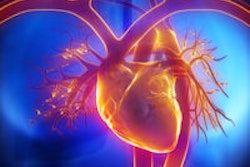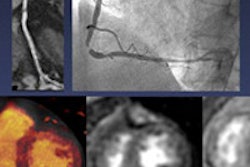
Researchers from Utah found that PET/CT is far superior to SPECT for diagnosing myocardial ischemia, with higher sensitivity at a lower radiation dose, according to a paper presented on Sunday at the American College of Cardiology (ACC) meeting in San Diego. PET/CT in particular far outstripped SPECT in determining that patients were free of cardiac disease.
Myocardial perfusion imaging (MPI) with SPECT has long been an important tool in the assessment of heart conditions, but it has disadvantages such as a lack of specificity and relatively high radiation dose. The rise of PET/CT has created the prospect that more accurate MPI scans could be performed at a lower dose.
A group from the Heart Institute at Intermountain Medical Center, led by cardiologist Dr. Kent Meredith, compared MPI scans performed with a SPECT camera in 2012 to those conducted with a PET/CT system in 2013. There were 197 patients in the SPECT group and 200 patients in the PET/CT group.
The researchers found that PET/CT had 100% sensitivity for detecting myocardial ischemia, compared with 94.6% for SPECT. But it was in specificity where PET/CT really outstripped SPECT, at 88% versus only 30.3% for SPECT.
PET/CT's accuracy was also much higher, with a positive predictive value of 98.3%, compared with 72.9% for SPECT. PET/CT's negative predictive value was 100%, compared with 74.1% for SPECT.
SPECT MPI also delivered false-positive results 6% of the time, while there were no false positives with PET/CT MPI. That translates into fewer follow-up procedures, the researchers noted.
Finally, PET/CT's radiation dose is a fraction of what is delivered during SPECT. SPECT typically uses low-energy radiopharmaceuticals that require longer exam times to acquire enough signal to create an image, according to the researchers. Also, the long half-life of SPECT tracers means they can remain in the patient's system for up to two days, producing an average radiation dose of around 30 mSv.
PET/CT radiotracers, on the other hand, typically have half-lives of two minutes, and their higher energy levels mean that images can be produced more quickly, with a radiation dose of around 2 mSv.
In further research, the group plans to analyze PET/CT's effects on cost reduction and the downstream procedures required for working up patients.




















